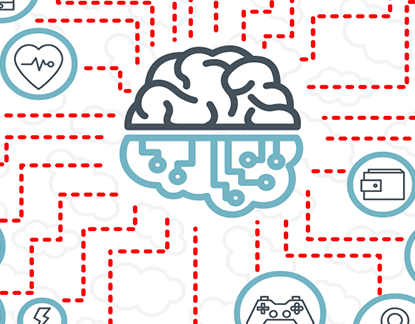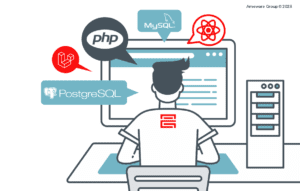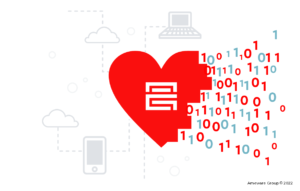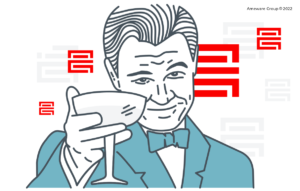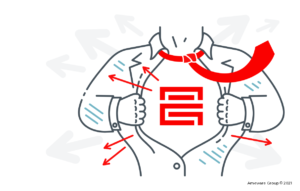INTRODUCTION. FACTS OF IOT SOFTWARE DEVELOPMENT YOU DON’T KNOW.
- IoT will add up to US$1.1trn in total to companies’ revenue worldwide by 2025, which is nearly 1% of projected global GDP. *
- The number of businesses which adopted IoT gained up to 20% efficiency in their operations.**
- By 2022, business related to IoT products is expected to comprise a market worth 561 billion US dollars.***
- Despite the hype, steady uptake, and tremendous commercial opportunity, a 2019 survey showed that less than 50% of businesses proceed with an active IoT development.****
- Decision-makers are holding back their excitement about the Internet of Things software development due to valid reasons. Concerns about security breaches, funding, IoT competency of in-house devs, infrastructure, name a few.
IOT AT ENTERPRISE LEVEL OF LEADING COMPANIES.
Appearing at the list of the top Internet of Things software development companies means success in the following checkpoints. First, holding a capability to comprise hardware and software vendors. Second, providing a Machine-to-Machine (M2M) and connectivity services. Third, customer satisfaction with the already delivered services has to be taken into account, too. Including the constant contribution of a supplier to elaborating and popularizing the idea of the Internet of Things for the future.
THE MOST COMMON CHALLENGES OF IOT SOFTWARE DEVELOPMENT.
1. Operation System
Choosing a tech stack for any big project starts with OS consideration. When it comes to the IoT devices, its lower performance and small memory capacity most certainly have to be accounted for. Analyzing the market, you can easily find out that Linux once again wins the competition. At the moment, it’s still the most adopted and extremely popular OS on the Internet of Things projects.
Speaking of other OS choices, FreeRTOS is also worth to mention. While being a minimal operating system, initially designed for microcontrollers, FreeRTOS has been slowly raising its presence on the market starting back in 2016. The OS has a particular growing potential, having AWS in its corner, which has taken stewardship of the FreeRTOS code and released Amazon FreeRTOS, created especially for IoT devices.
Microsoft has dramatically participated in this competition, too, designing its own version of microcontroller’s OS, Azure Sphere OS. With its features, allowing to receive security patches and upgrades through the Azure Sphere Security Service, the OS had already found its customers among IoT device makers.
2. IoT Gateway
An IoT application server communicates with all end devices through an Internet of Things Gateway, which is typically a hardware device or an application. All data have to go through the IoT Gateway.
You simply cannot overestimate the importance of it. It’s strongly suggested to approach this matter responsibly. Apart from application robust and security, the right Gateway can also reduce total ownership costs. These are some mandatory features of the Gateways (but not only ones):
- External watchdog
- Over-the-air programming
- Firmware Upgrade
- Real-Time Clock
- Memory for Data Logging
- Trusted Platform Module for certificate storage, identity management
- TLS, SSL, and Client-side X509 Certificate Support
- Remote rebooting and diagnostics
3. IoT Platform
The first question that comes to mind, why do I need one at all? For example, your business specializes in building coffee machines; at some point, you decided to make your devices “smart”. Instead of reinventing the wheel and spending a lot of money and time on building everything in-house, you might consider using an IoT platform.
The current leaders on the market are AWS IoT Core, Azure IoT Hub, and Google IoT Core. Concentrated on infrastructure, these are often used for building some customized solutions, depending on business needs.
4. Security in the Internet of Things
The cornerstone of any discussion about the Internet of Things without a doubt belongs to the security. Because anything that’s connected to the Internet is apriori vulnerable to cyberattacks. Cybercriminals can find their way to exploit information at many points within the Internet of Things ecosystem, from corporate servers to cloud storage.
Sadly, diverse data types and no standards for the IoT devices indicate that there is no one-for-all security solution in IoT deployment.
To minimize the possibility of the attacks, the following concepts have to be implemented:
- Isolated VLA
- Detached corporate VPN
- Incorporating security at the design phase
- Security testing in the software development process
- Using multifactor authentication or biometrics where possible
- SSL/TLS encryption technologies
- End-user and machine-to-machine authentication
- Keep tracking device’s available features and disable the unused one’s
- Implement automatic antivirus updates
- Keep your software up to date
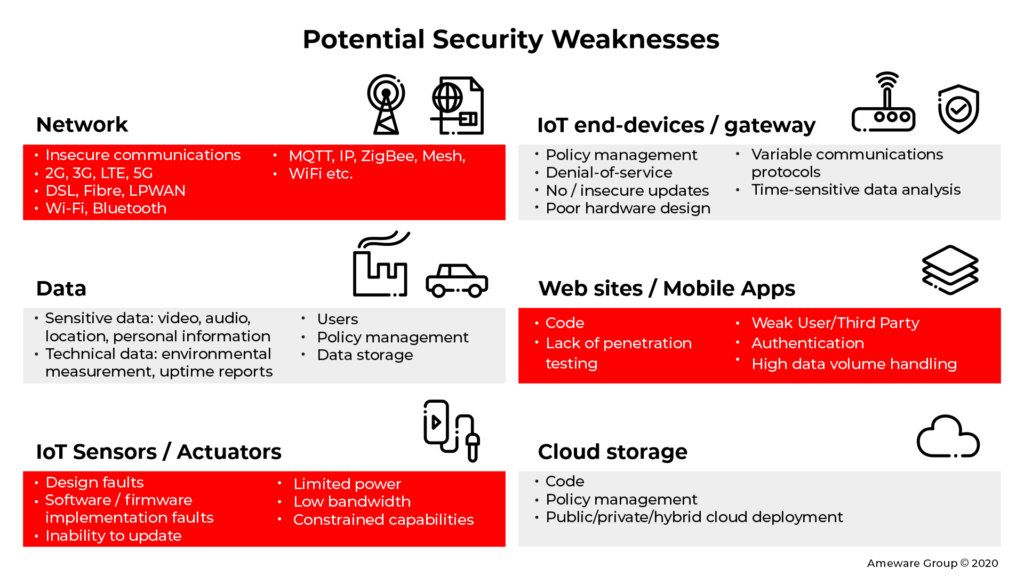
5. Efficient Design
Creating a smooth user experience for a single new application is already challenging. But what would you say about an app consisting of several devices, interfaces with various functionality, IO data streams? Designing such a complex interface requires many more new aspects taken into account.
- Simplified authentication
- Seamless cross-device interaction
- Interface personalization
- A unified environment of the IoT ecosystem
6. Cross-Platform software development
The Internet of Things deals with a vast range of industries. Its use cases scale from a single constrained device to large cross-platform applications and cloud products working in real-time. Legacy and emerging communication protocols, bound together, allow devices and app servers to talk to each other in more interconnected ways.
Thanks to the Institute for Electrical and Electronics Engineers (IEEE), Internet Engineering Task Force (IETF), which had defined the standards of cross-platform deployment. Regularly updated, they guarantee interconnected communication.
HOW TO START THE DEVELOPMENT.
1. Infrastructure as code
Infrastructure as code (IaC) is an automation of IT infrastructure provisioning, eliminating the necessity for engineers to manually manage the servers, connections, databases, and other infrastructure. Typically, they use frameworks like Chef or Puppet.
Given the evergrowing complexity of nowadays applications, sometimes it’s close to impossible to manage and provision the infrastructure within a few minutes, while IaC provides an opportunity even to automate it. So if your application works with a load balancer, web server(s), databases, number of queues, and logging systems, you may want to have IaC, too.
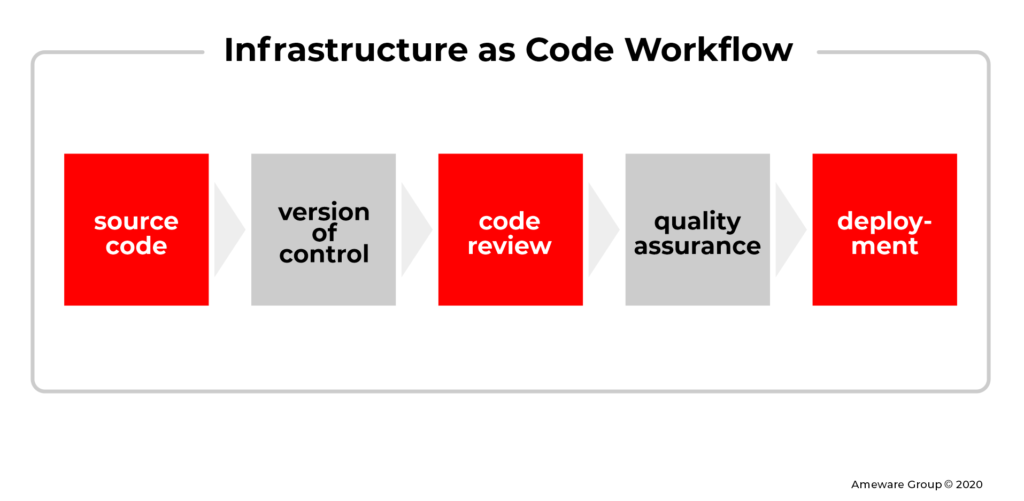
2. Agile infrastructure
Back in 2001, The Agile Manifesto altered the landscape of software development. Agile methodologies influenced developers to break down product features into smaller chunks known as “user stories.”
The impact of agile has been outstanding. It spurred thinking beyond agile development and into multifunctional processes (DevOps) and end-to-end automation (CD). The days of the waterfall approach has long past. Although the Agile Manifesto is nearly two decades old, collaboration and communication are still vital.
CONCLUSION.
Despite the increase in IoT projects in the last few years, the Internet of Things still has many issues to fix and improve. IoT start-ups and enterprises should look into the new trends and improvements the market has to offer even if they didn’t consider it before.
First and foremost, check the IoT standards, which will solve and prevent some of the issues related to cross-platform development. Although, other issues like security require a more custom approach, giving the absence of definitions in that field just yet. Second, invest in a user-friendly interface, which the customer would enjoy. Third and most important, choose the right team, which will be a perfect match for your project needs.




